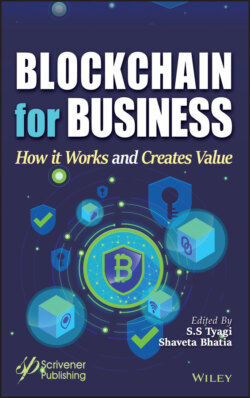Читать книгу Blockchain for Business - Группа авторов - Страница 60
2.1 Introduction
ОглавлениеBlockchain is a type of database that is shared across a network of computers, by allowing the transparency of transaction. Records containing information are added to the database, bundled together into what called as blocks. These blocks are then linked together to form a chain—hence blockchain. When we talk about blockchain ecosystems (a group of organisms interacting with one another within their surroundings), there are the groups of actors (users, miners, developers & researchers, etc.) interacting with each other within the world of blockchain and with the encompassing off-chain world. The core interactions between these actors take place in the form of transactions, but these transactions are almost entirely limited to the blockchain itself. In lay man language to understand blockchain-at present some of the countries already adopted an online ballot voting system which includes a voting registration database, electronic devices and software. For voting, firstly individual has to register himself which includes his identity number, name, phone number and personal information then it is stored in the software. From the cyber security perspective it is easy to disrupt the software by just attacking on the voter’s registration database. Each part in the election process whether it is hardware or software is at major risk of hacking. When the software system is manipulated it can lead to the inappropriate election result. Not limited to that, after hacking the database of voters they can easily access their social media accounts. So, the sufferers at the end are the common people. To solve this issue the new technology blockchain can be used to provide security during voting time. With its transparency, immutability and accountability properties this can be attained up to some exact level. It ensures that digital data must come from the trusted source by using cryptography.
Blockchain’s property once data is entered can never be destroyed enables it to store individual’s identity records such as biometrics, iris scanning and many more for authentication voters and to record their records in the tabulation format. Blockchain technology is like having public key—visible to anyone, can help each individual voters and election conducting officials in counting number of votes without any malfunctioning in the system and which tends to a fair election outcome. Basically, this new technology has completely eradicated the third party i.e. electronic devices (Hardware), hence does not involve disturbance in the entire system. Moreover it enhances the security level of the entire system by providing copy of data to other nodes existing in the network. If hacker tries to modify the record of one node then it has to manipulate the data on the other nodes too on which same information exists which is quite complicated. Thus blockchain acts as a shield for preventing the system against cyber-attacks. Fraudulency can be minimized as the data has been copied to more than one place.
Like in Crypto currency, its ecosystem is based on Blockchain and has four parts or elements: the users who use crypto currencies to receive and send currency, crypto currency miners who produce the crypto currency, investors who buy crypto currency and the developers who write programs related to this system and network and develop it. No part of this system can continue working each without the other.
An ecosystem comprises entities that collaborate along perpetuity of consumer’s needs to deliver greater value and bolster the addressable retail market. An ecosystem is defined by constructing a ring around organizations, individuals, and things that share or complement a set of interests. This circle will be defined by the mindsets of the stakeholders and whether they would want to create efficiencies, curate new markets, and improve collaboration.
The collaborator-stakeholders defined ecosystem as a scope from creating economically broad and sustainable markets aligning with emerging customer preferences and leveraging open source development for complex problems. These interests can include intercommunications within and cross wide organizations, different sectors of the economy, and industries. A blockchain ecosystem is said to be developed if it allows the interconnectedness not only with producers or sellers but also with the consumers. Its aforementioned correlativity permits to build systems that can selectively take profit of the blockchain—in its trustworthiness, clarity, and decentralization. The Blockchain ecosystem is helpful to maintain the environmental sustainability as it is having potential to verify the transparency of the transaction records—data which has to be transferred and the person having the data at present can both be verified by blockchain technology. This can be implemented by the decentralization and digitalization of the conclusion. Blockchain ecosystem also promises to improve the existing governance environmental models which are progressing at steady rate and intermediaries associated with the models taking sweat equities charging high by empowering broader people of stakeholders. Moreover, Blockchain are public—records are visible to everyone but none have permission to delete those records or destroy them. Basically Blockchain are of three types: public-like decentralized organization, private-degree of openness is limited to specific users like in Audit companies, Consortium—refers to an agreement between the organization and actors. In nature, ecosystems tend to arise naturally. To ensure the ecosystems fulfill their purpose, they’re often controlled by the creation of applications, integration with external systems, added on by the creator also. There are Self-fulfilling agreements, the smart contracts which can manage the system automatically, by the members of the ecosystem just in case.
